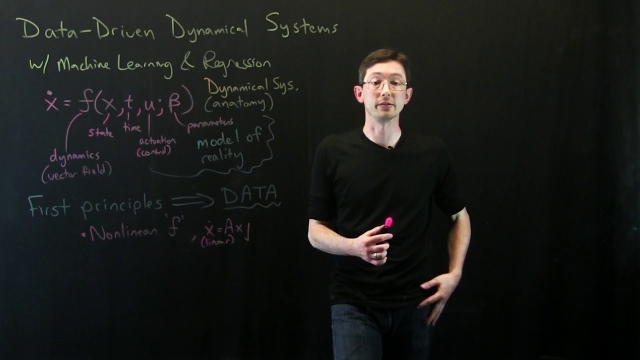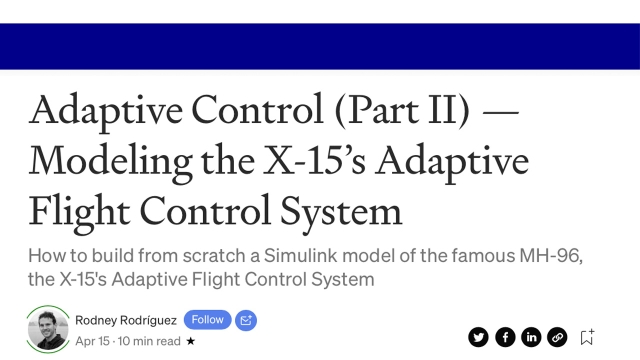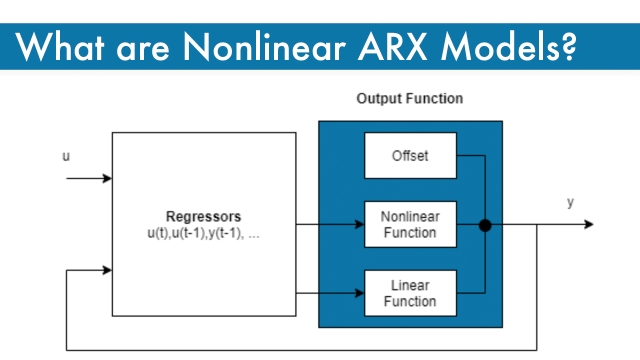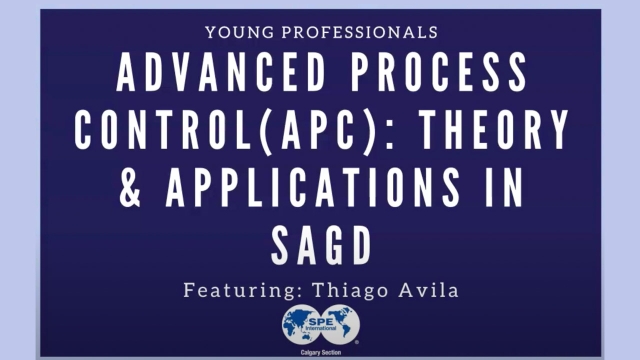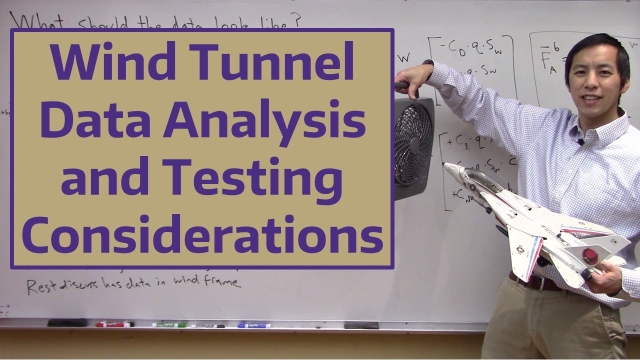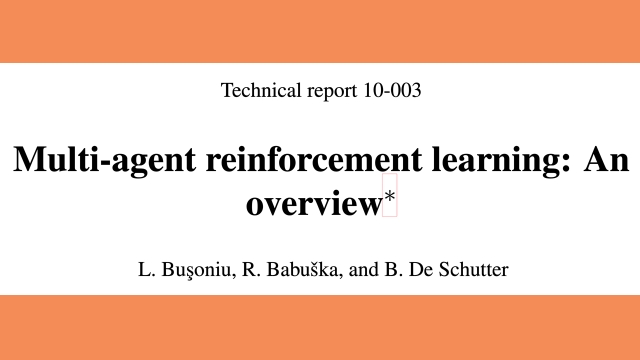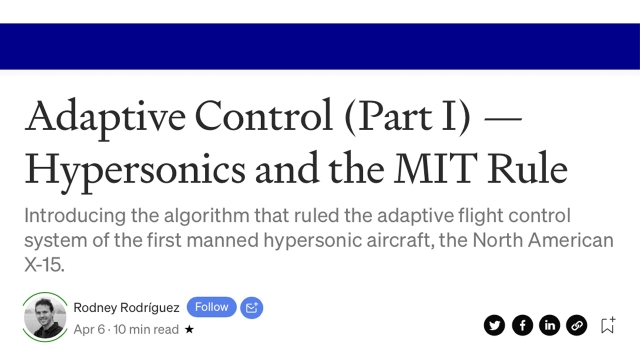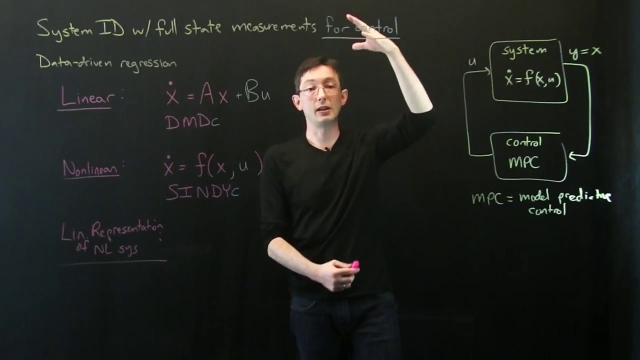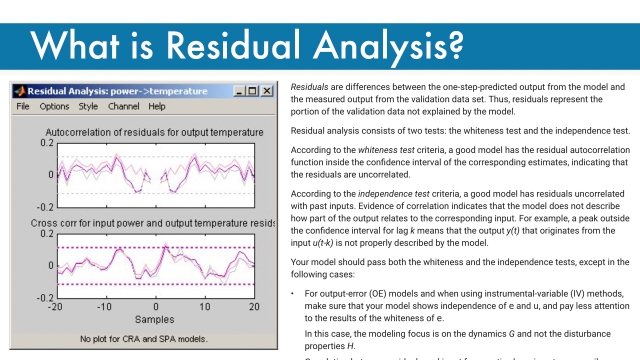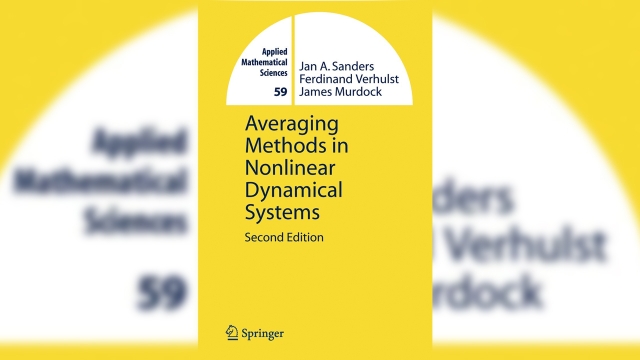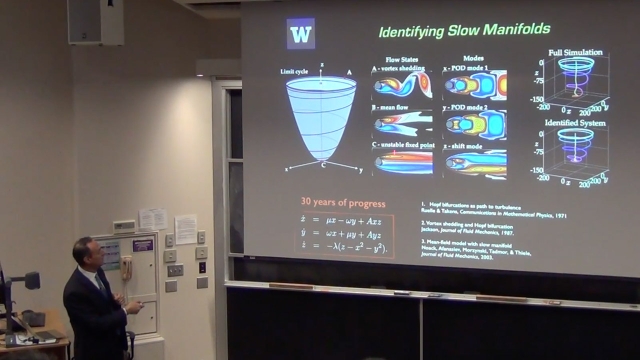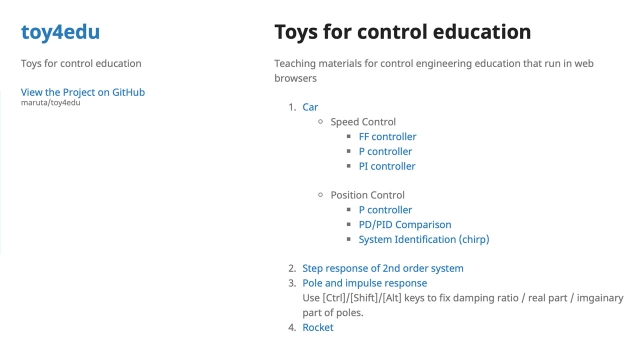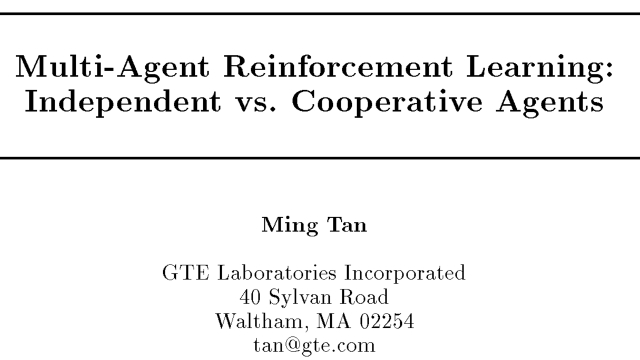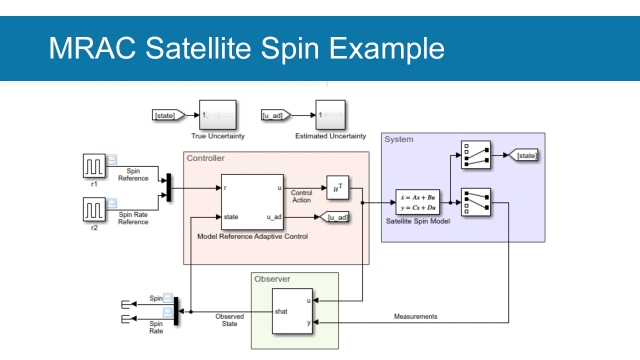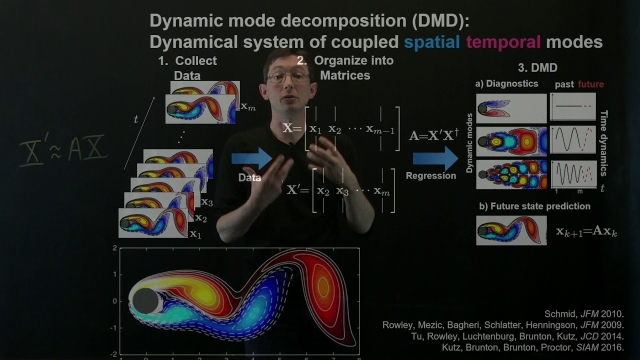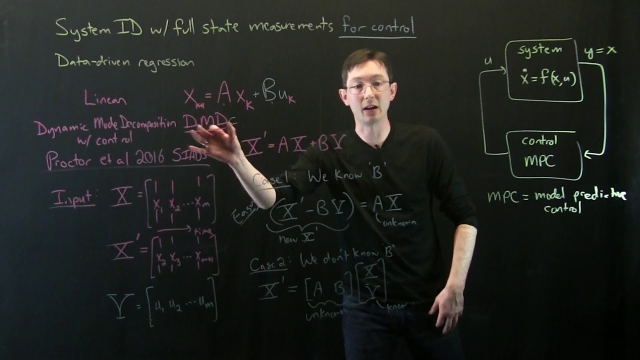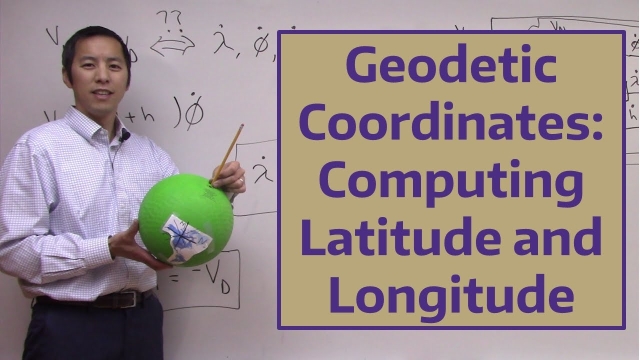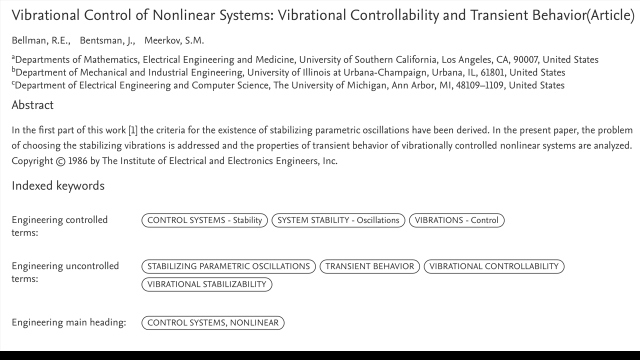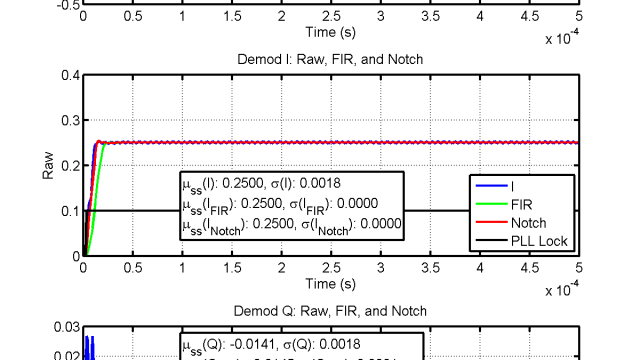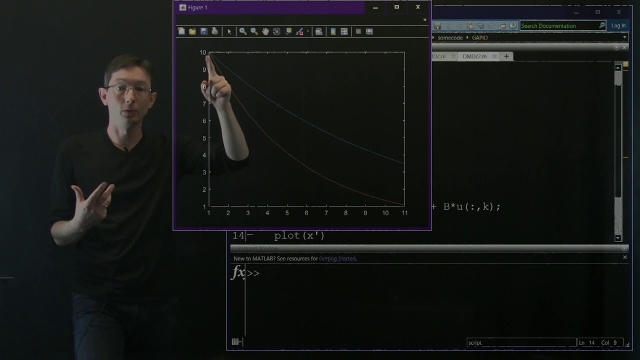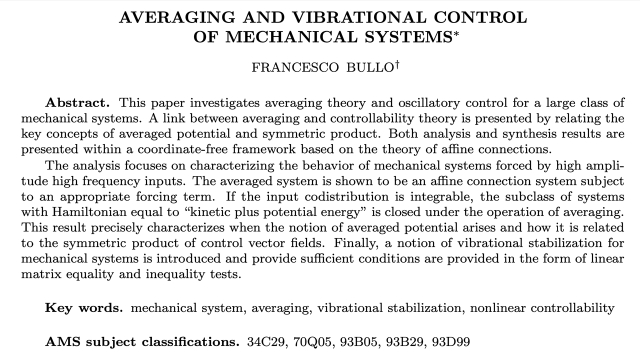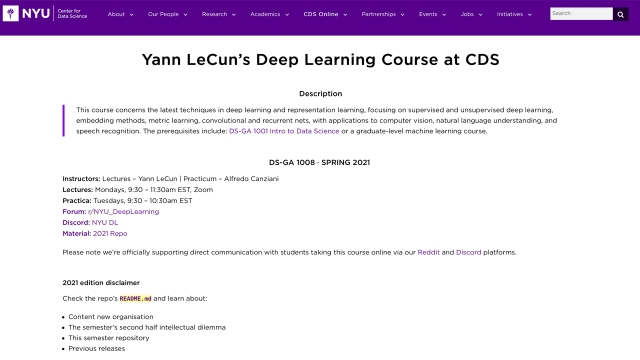
Data-Driven Dynamical Systems Overview
This video provides a high-level overview of this new series on data-driven dynamical systems. In particular, we explore the various challenges in modern dynamical systems, along with...
See MoreAdaptive Control (Part II) —Modeling the X-15’s Adaptive Flight Control Syst...
This blog post shows how to build from scratch a Simulink model of the famous MH-96, the X-15's Adaptive Flight Control System
See MoreWhat are Nonlinear ARX Models?
This Mathworks page provides an overview of Nonlinear ARX Models.Nonlinear ARX models extend the linear ARX models to the nonlinear case. The structure of these models enables you to model...
See MoreAdvanced process control (APC): Theory & Applications in SAGD
This webinar is presented by Thiago Avila and covers what APC is, why we do it, examples of APC in the SAGD industry, what optimization opportunities are available, and where this technology...
See MoreWind Tunnel Data Analysis and Testing Considerations
This is the last video in our 3 part series on wind tunnel testing. In this video, we discuss what typical plots of wind tunnel data might look like and how to extract relevant information...
See MoreMulti-agent reinforcement learning: An overview
From the abstract:
Multi-agent systems can be used to address problems in a variety of do- mains, including robotics, distributed control, telecommunications, and economics. The complexity...
See MoreAdaptive Control (Part I) — Hypersonics and the MIT Rule
This blog post introduces the algorithm that ruled the adaptive flight control system of the first manned hypersonic aircraft, the North American X-15.
See MoreSystem Identification: Full-State Models with Control
This lecture provides an overview of modern data-driven regression methods for linear and nonlinear system identification, based on the dynamic mode decomposition (DMD), Koopman theory, and...
See MoreWhat is Residual Analysis?
Residuals are differences between the one-step-predicted output from the model and the measured output from the validation data set. Thus, residuals represent the portion of the validation...
See MoreAveraging Methods in Nonlinear Dynamical Systems
Perturbation theory and in particular normal form theory has shown strong growth during the last decades. So it is not surprising that the authors have presented an extensive revision of the...
See MoreNathan Kutz:"Data-driven Discovery of Governing Physical Laws"
Seminar by Dr.Nathan Kutz on "Data-driven Discovery of Governing Physical Laws" on 10/31/2018 CICS Seminar Series
See MoreToys for Control Education
Teaching materials for control engineering education that run in web browsers. Speed control, position control, step response of 2nd order system, pole and impulse response, and rocket.
See MoreMulti-Agent Reinforcement Learning: Independent vs Cooperative Agents
From the Abstract:
Intelligent human agents exist in a cooperative social environment that facilitates learning. They learn not only by trialand -error, but also through cooperation by...
See MoreModel Reference Adaptive Control of Satellite Spin
This example shows how to control satellite spin using model reference adaptive control (MRAC) to make the unknown controlled system match an ideal reference model. The satellite system is...
See MoreDynamic Mode Decomposition (Overview)
In this video, we introduce the dynamic mode decomposition (DMD), a recent technique to extract spatio-temporal coherent structures directly from high-dimensional data. DMD has been widely...
See MoreSystem Identification: Dynamic Mode Decomposition with Control
This lecture provides an overview of dynamic mode decomposition with control (DMDc) for full-state system identification. DMDc is a least-squares regression technique based on the singular...
See MoreKristin Pettersen Lectures on Nonlinear Control
Kristin Pettersen Lectures on Nonlinear Control, including many of the necessary mathematical tools and concepts.
See MoreGeodetic Coordinates: Computing Latitude and Longitude
In this video we show how to compute the geodetic latitude and terrestrial longitude if given the velocity north and east. This is useful for simulating a body moving over a spheroid Earth...
See MoreVibrational control of nonlinear systems: Vibrational controllability and tr...
In the first part of this work, the criteria for the existence of stabilizing parametric oscillations have been derived. In the present paper, the problem of choosing the stabilizing...
See MoreFull Stack Deep Learning
There are many great courses to learn how to train deep neural networks. However, training the model is just one part of shipping a deep learning project. This course teaches full-stack...
See MoreThe Demod Squad: A Tutorial on the Utility and Methodologies for Using Modul...
Video talk of the paper by the same name.
See MoreSystem Identification: DMD Control Example
This lecture gives a Matlab example of dynamic mode decomposition with control (DMDc) for full-state system identification.
See MoreAveraging and Vibrational Control of Mechanical Systems
Abstract. This paper investigates averaging theory and oscillatory control for a large class of mechanical systems. A link between averaging and controllability theory is presented by...
See MoreKoopman Spectral Analysis (Continuous Spectrum)
In this video, we discuss how to use Koopman theory for dynamical systems with a continuous eigenvalue spectrum. These systems are quite common, such as a pendulum, where the period...
See MoreYann LeCun’s Deep Learning Course at CDS
This course concerns the latest techniques in deep learning and representation learning, focusing on supervised and unsupervised deep learning, embedding methods, metric learning...
See More
